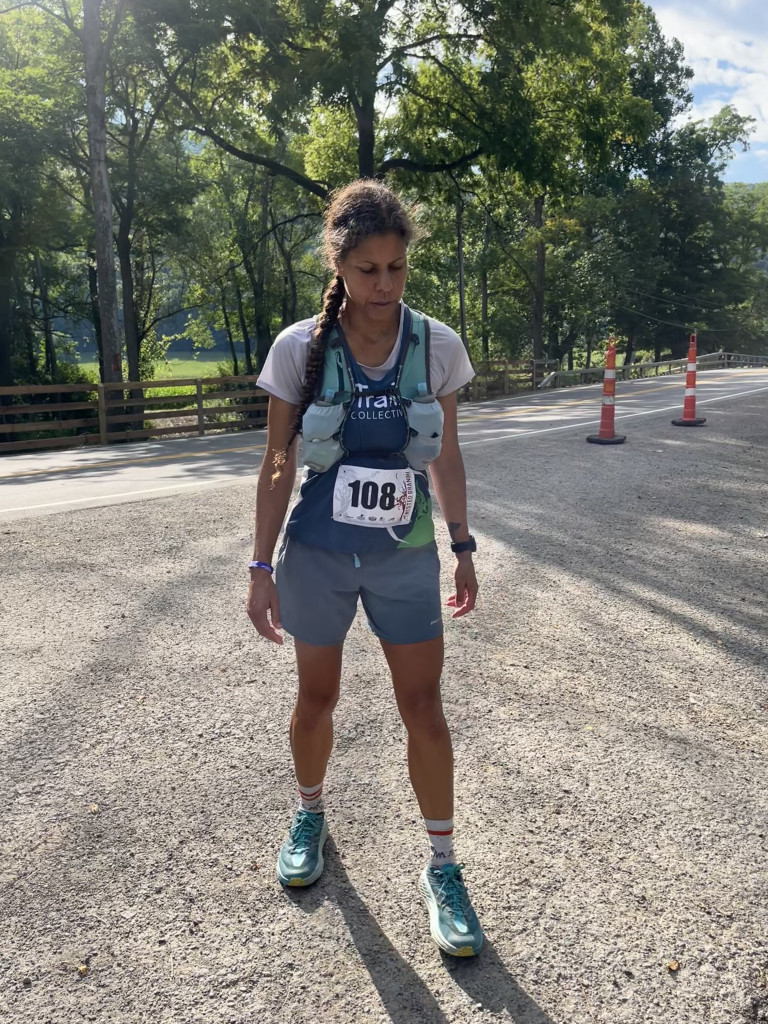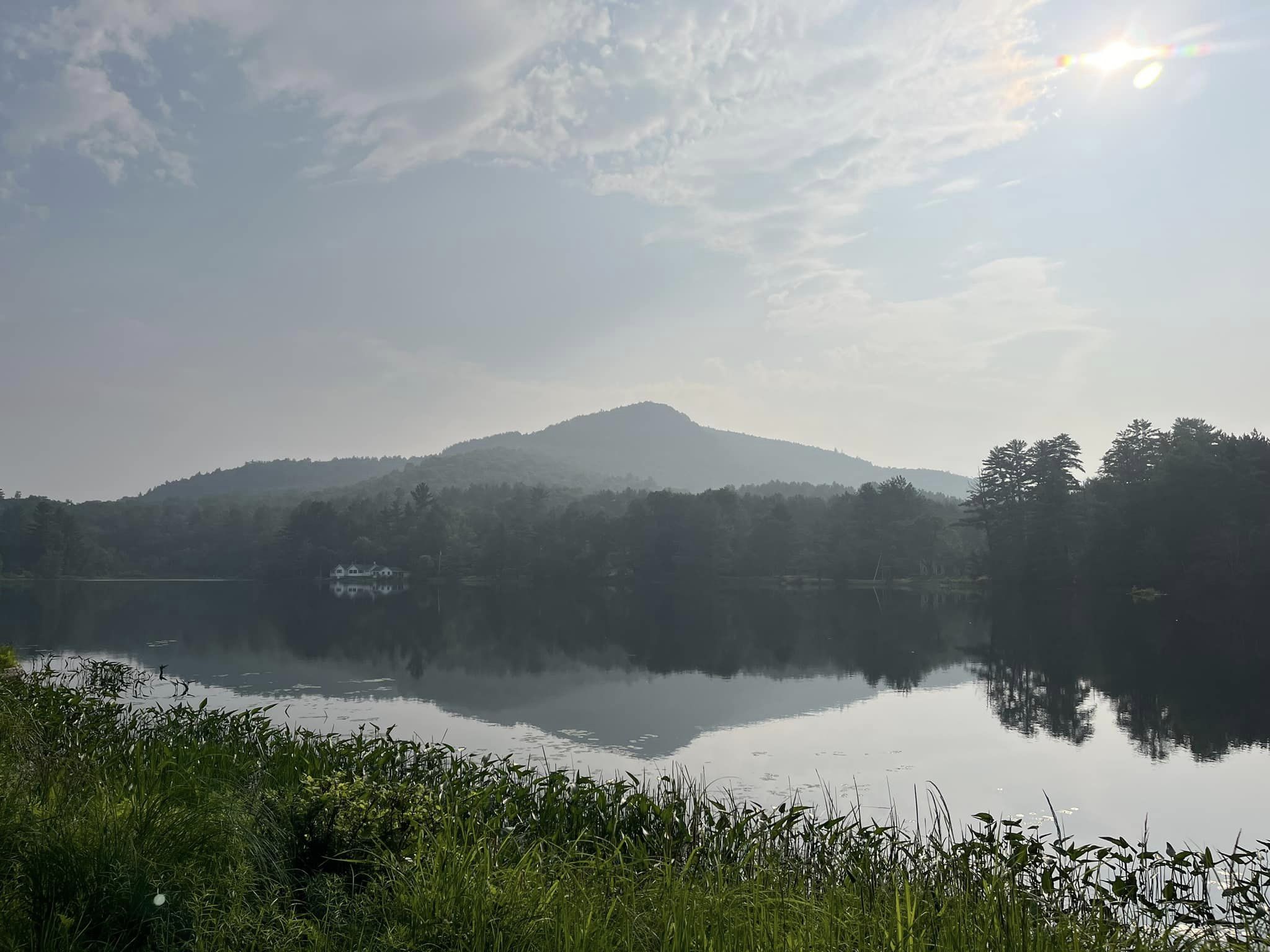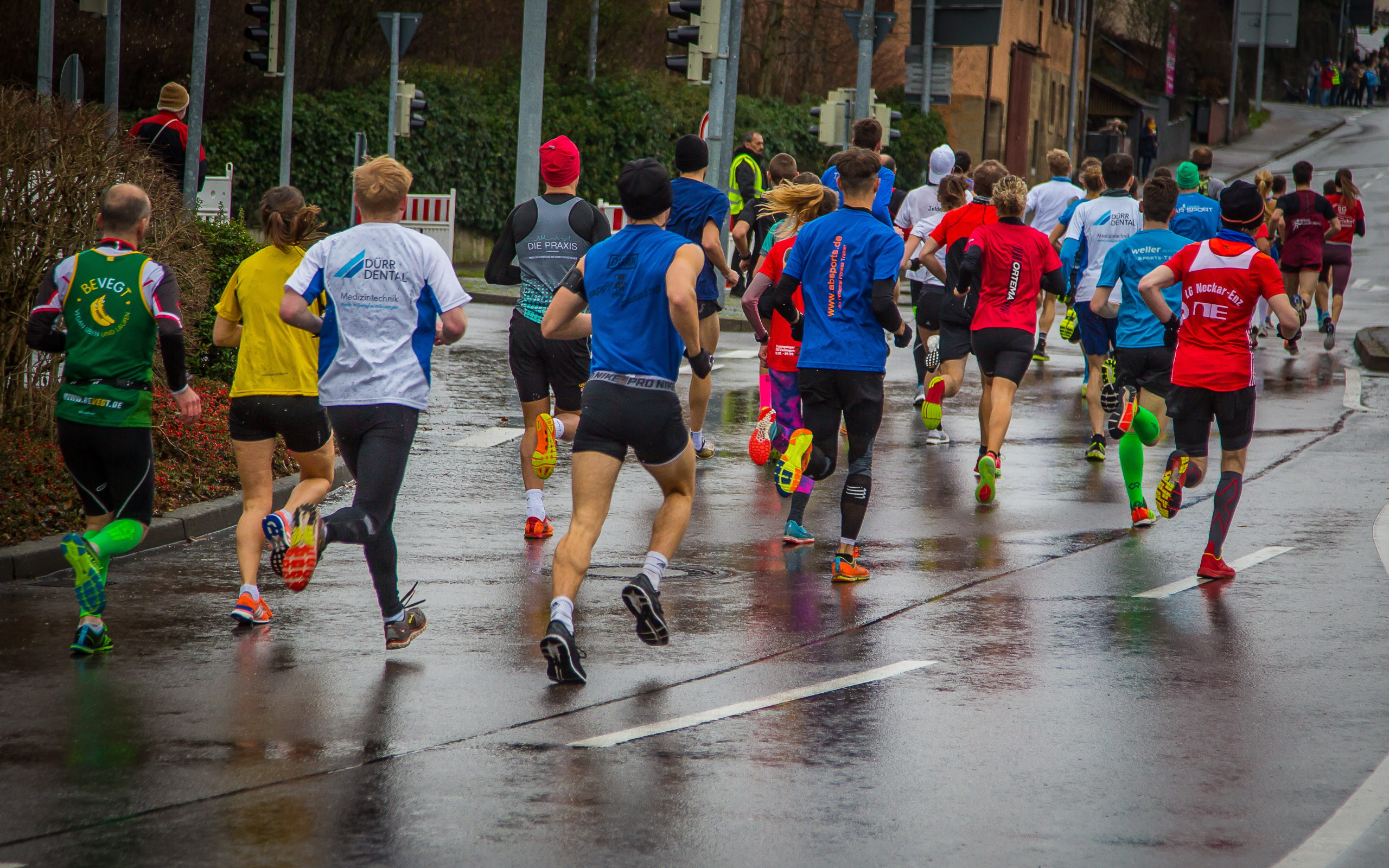My First DNF and What It Taught Me
It stung because I was now only 20 miles from the last aid station, and in my own mind, I was in the home stretch.
“What do you mean I can’t continue?” was the first thing my mind offered in silent response to the aid station captain informing me that he could not allow me to continue past that point because I had timed out.
All I could think about were the miles that still lay ahead of me, the trails that beckoned to me, and the finish line that I had dreamed about for close to a year.
Yet there I was, at the Bud Valley aid station, watching the aid station volunteers take down the canopies and pack up the water and snacks.
It was all very surreal and dreamlike. Perhaps going from full throttle to a complete stop in an instant will do that.
I paused my Garmin but could not bring myself to end the workout. I would keep it on pause just in case they might change their mind. But rules are rules, and in the end, I waited so long my Garmin ended the workout for me.
40.77 miles and 6,735 ft of elevation gain.
Anna drove me back. Her kindness helped ease the sting of my disappointment.
Once at the finish, I collected my camping gear and was offered a mug to take home with me. Allowing all runners, regardless of whether they finish, to take home a mug lessened the sting of a DNF. I respect that not all runners would want a mug if they had not finished, but for me it helped me feel as though I was still part of the Twisted Branch family. I wasn’t an outsider now because I DNFed, just a runner who slowed up a little too much that day and didn’t quite make it all the way as a result.
But in the days that followed, I would remain frozen in time, locked into that moment of longing to finish as I was being informed I could not. As race volunteers and finishers entered the workweek come Monday, I existed in a state of suspended animation, still floating in that singular moment on Saturday afternoon as I watched the aid station being taken down. Perhaps others who DNFed felt the same; perhaps some had already moved on. In hindsight maybe I should have run the roads back to my car. Because I so desperately wanted to run. Regardless, it’s over now.
With the following days the sting lessened, and with the replaying of events in my mind slowly came the wisdom to understand just what caused my race to unravel for me. And thankfully, by Tuesday, the fog had begun to lift, and I felt myself returning to the present. As I look back, there seems to have been a gradual unraveling, one that I may have been able to resolve with a little more grace on that last cutoff time, but one that I did not recognize was occurring in the first place. I’m always quick to begin troubleshooting the moment any hint of trouble sets in. I maintain my focus and I don’t throw pity parties. I run these races without a crew so it’s my inner voice advising me what to do, based on what I’ve learned from others and through my own personal experience. But what I didn’t realize was that, in this race, I was beginning to slow down too much, despite all the troubleshooting. Or maybe, because of it.
Where I messed up:
- Nutrition: Too much watermelon. And water. Typically, I run my races and long runs fueling with Tailwind (i.e. just liquids), and only made an exception 30 miles into the Cayuga Trails 50-miler earlier this summer, when my overly concentrated Tailwind (oops) caused me to crave watery watermelon and water. Looking back, I believe the excess of electrolytes to start maintained my electrolyte balance. I didn’t cramp. Even in training, I tend to cramp when consuming just water. So, I should know better. But fond memories of watermelon and bananas from the CT-50 caused me to start eating bananas and watermelon much too soon during the Twisted Branch 100K. I started with banana at The Sneaker, and at The Lab enjoyed not one, but TWO slices of watermelon, and quite a bit of water. It was getting hot and I was thirsty. Leaving the Lab with a bloated belly was the first sign I overdid things just a little. Belly bloat kept me walking for the first little bit after I left the aid station, but the bloating gradually gave way to a stomach cramp that would speak to me every time I started running. I’ve never cramped in a race before. So instead of running outright, I continued to alternate with walking a bit. Thankfully, by the time I reached the Patch, the cramping had subsided. But I needed a little salt, so I hung out and had a few potato chips…hung out and refilled a flask with Skratch…hung out and chatted just a little. According to my splits, that equated to 9 minutes of chips, Skratch, and conversation at the Patch, following the 7 minutes I spent at The Lab eating too much watermelon. I eventually left the Patch feeling good and ran through the woods until I reached the road CROSSING…but instead of crossing, I turned left with two other runners, and once we realized our error and backtracked, we managed to add an extra mile onto our races. A few more sluggish miles through the woods, and we arrived at Bud Valley to hear the unexpected news that we were now past cutoff. Damn. I was finally feeling runnable again.
- Hydration: Note to self – I can’t drink plain water. Water makes me cramp. I am a salty sweater. I literally sweat salt. To the point that it gets awkward. But that’s my reality. So no more plain water for me. Looking back now on this race and at recent training runs, I am convinced that drinking plain water (perhaps in combination with high-water-content watermelon) caused the cramping. Time and salt from the potato chips helped but by then I was already behind schedule. It was too late.
- Starting the race with a headache: I let myself become too anxious in the days leading up to the race. This was my “A” race and I was determined to qualify for Western States. The resulting dull headache would plague me on and off starting Thursday and would return Saturday morning. I ran the first several hours with that headache, praying it would eventually go away, perhaps with the sunrise, when I could remove my headlamp. Eventually the headache did subside but then I was on to other challenges. I debated about taking Advil Friday night and perhaps in the future there will be no debate.
- Gluten: After completing the draft of this article a week following the race, I had started recognizing symptoms of glutening in myself. Looking back, I recognized that the symptoms had gradually appeared in the week following the race, but given what I was consuming that was new, it’s difficult to say whether the glutening first started this past week or in the week leading up to the race. If I were already experiencing glutening in the days leading up to the race, it very likely could have impacted my race. A weird headspace and less energy overall seemed unexpected and strange to me that race day. And perhaps that headache may not have been entirely sourced from my anxiety. In the future I’ll be much more diligent about not introducing any new foods or even coffees in the weeks before a big race, regardless of how “safe” these consumables appear to be.
- Strategy: From what my friend Joshua warned me, it’s important to bank miles and time early on… He DNF’ed at the same aid station last year. He came back this year with tons of momentum to cross that finish line and return the rock he collected from the course after he timed out last year and I am so proud of him. My strategy in long, technical ultras is usually to be conservative and keep some gas in the tank for later in the race. But I understand now that for the Twisted Branch 100K, I need to make better time and be especially diligent between the Patch and Bud Valley. Proper fueling and a lack of stomach cramps will make this easier. Know your race strategy.
- Wrong turn: The course was amazingly well marked. 3-2-1: THREE flags on the side of the trail you will make a turn, TWO flags follow for confidence, ONE flag in the distance to confirm. I repeated this to myself with every turn. So, the one time I would go the wrong way in this race it was 100% my fault. I wasn’t paying attention this one time. I was with two other runners and just followed them onto the road. That is my fault. That said, a wrong turn need not derail your race, unless of course you’re already behind schedule because of cramping referenced above AND you’re not paying attention to the cutoffs, then you may end up screwed. It was my fault.
Mixed emotions that followed:
After I was back in my car, the wheels in my head really began to turn. I started questioning whether I was good enough for any of this. I felt inadequate because I’m a back of the packer (though usually I don’t care too much about position). And for a time, I decided I would be fine if I did not return in 2023. I started questioning whether I really belonged in these tough, technical races.
This shit really hurts.
My husband, who is not a runner but has known me for 19 years, and knows I’m tough enough, had to give me a pep talk because I was on the verge of a meltdown when I came home. He had to remind me who I was, regardless of race outcomes. But he also reminded me that it’s perfectly fine to adjust your direction if something is no longer working for you. His pep talk, my daughters’ hugs and sweet notes, burgers, fries, a cold beer, and hot shower, all worked wonders for me.
For a moment, I really was okay with not returning next year. But by the next morning, I had changed my mind.

Positives, because every cloud has a silver lining:
In the end, a humbling experience like this will make me stronger. And it will make me wiser. Having now experienced a DNF will make me a more empathetic coach. I learned so many lessons that day. Even a humble person can learn humility.
And the two hours of pre-dawn trail running were amazing and a first for me. It was so fun to be in a line of ultrarunners and stream of headlamps following singletrack through the woods in the dark. The camaraderie was top shelf. Everyone was in such good spirits, even at 4:00 in the morning. Maybe it was all that good coffee they served us at the morning check-in.
I may return with poles next year, at least for The Sneaker climb. I am still recovering as I write this, but my old Lekis are already set aside, waiting for a run. I’ve hiked extensively with them, particularly in the Canadian Rockies but I’ve never run with poles.
Everyone’s DNF experience will be slightly different, but let’s all remind ourselves that a DNF does not define us as athletes. I think this is so important to emphasize because in the moment, it’s easy to forget. Consistency and commitment to our sport define us. Shit happens. Sometimes we make poor decisions and other times circumstances are beyond our control. Or both. Recognize the feelings of disappointment that creep up because we are inevitably human. But give yourself permission to let go and focus on what’s next on your schedule, whether that’s another ultra or adventuring on your own time. Remember that DNF = Did Not Fail.
While planning the details of your ultra are important, particularly where there are additional logistics involved (travel, lodging or camping, etc.), do not overthink the minutiae. It’s emotionally and physically draining to obsess too much over details or be excessively nervous because maybe you’ve never tent camped before a race before. Be prepared and have a plan…then put your mind to rest and let everything play out as it is intended.
You’ll no doubt be tapering the week leading up to the race but be sure to taper in all areas of your life. I spent the week before this race unpacking, sorting, and organizing childhood belongings sent to me from my parents’ home, not to mention doing excessive amounts of laundry because I was feeling guilty about being gone and wanted to make sure my daughters had all their go-to clothing items ready for them. At the time, I believed this to be a great way to taper the body and distract the mind from the upcoming race. But there is a distinct difference between distracting the mind from one task and overfilling it with another. In hindsight, while the miles and elevation gain were less (despite all the stairs!), I did not properly rest.
Unless you are in the lead pack, know your aid station cutoff times. For the CT-50, I carried a paper with aid stations and cutoffs with me, and I paid close attention to my times. These are races. While there is occasionally time to socialize at aid stations, you need to know when to chat and when to hustle.
And perhaps after a DNF you may feel the need for redemption. In that case, you should absolutely apply the lessons you learned from your DNF and return to crush the race next year. You’re so much wiser now. But do this for yourself only, as there is nothing to prove to anyone. That said, there is nothing wrong with reevaluating your goals and focusing on other events if that fills your bucket more.
As for me, I’ll be back next year. I’m simply not done yet.
Add Comment
You must be logged in to post a comment.







